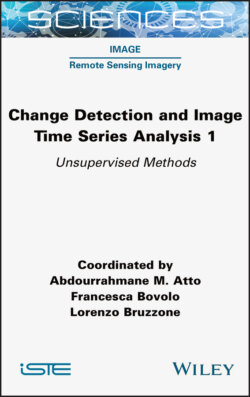Читать книгу Change Detection and Image Time-Series Analysis 1 - Группа авторов - Страница 21
1.3.2.3. Multiclass change representation and discrimination
ОглавлениеThe aim of this step is to visualize and discriminate multiclass changes present in the reconstructed SCVs. To this end, the S2CVA detector introduced in section 1.3.1 is applied on the S[u, v]. Note that the detector exploits not only spectral variations, but also spatial variations represented in the reconstructed SCV components. It is also worth noting that the 2D polar scattergram projects multiclass change information from the considered high-dimensional reconstructed SCVs into a low-dimensional (i.e. 2D) feature space, which is lossy and ambiguous on the type of changes. However, the most significant discriminative information of different changes is preserved.
Instead of using thresholding to segment the binary and multiple classes in the variables ρ and θ, the simple but effective clustering, i.e. k-means, is used for generating the final CD map, which does not rely on any specific data distribution. This is due to the fact that changed and unchanged pixels in ρ and multiclass changes in θ do not always follow a Gaussian mixture distribution (Zanetti et al. 2015). Thus, for the binary CD step (i.e. separating two classes), the number of clusters kρ is equal to 2, and for the multiclass CD step, the number kθ is defined as the number of changes observed in the 2D polar scattergram.
